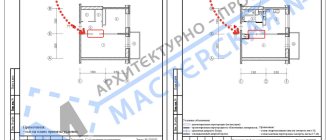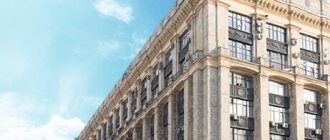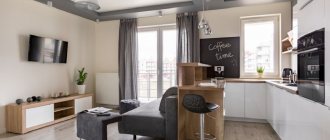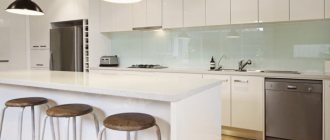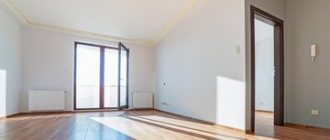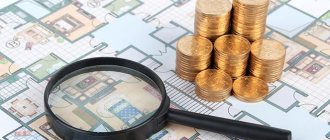A small toilet or bathroom is a problem in most homes built between 1950 and 2000. Apartment owners often think about remodeling their bathroom and toilet - dividing or expanding them - but often make critical mistakes that make the procedure illegal and even dangerous.
To avoid this, at the planning stage you need to familiarize yourself with the legislative framework and find out exactly how changes can be made and which plans will have to be abandoned.
Do's and Don'ts
In a brick or panel house, certain changes can be made regarding the bathroom. By law, the following is permissible:
- Removing the septum. With this action, you can significantly increase the usable area of the bathroom and toilet: it will be possible to install a larger shower or bathtub, it will be possible to install additional furniture or equipment.
- Using non-residential space to increase the area of the bathroom. This implies an increase in the size of the room for water procedures due to the corridor or built-in closet, storage room.
- Changing the position of the bathroom. In this case, complete or partial redevelopment of the room is allowed, but only when, according to the classic layout, the bathroom is located above the non-residential area of the neighbors below. The complete relocation of the hygiene room must be coordinated by law with mandatory waterproofing of the floor and re-equipment of ventilation.
In order for the redevelopment of a toilet to be legal, it must be coordinated with utility services and the housing inspection.
Prohibited changes
Owners cannot plan to remodel a bathroom in an apartment if it affects at least one of the following aspects:
- Using the living space to enlarge the bathroom. The law prohibits expanding or moving a bathroom above the neighbors' living area, which is associated with the risk of flooding.
- A door leading into the kitchen or bedroom from the bathroom. The only exception is a disabled person’s home, or the presence of a second bathroom, the layout of which fully complies with legal standards.
- Ventilation shafts are not used correctly. If the layout involves installing shelves or other furniture in the bathroom, as well as artificially narrowing or moving the shaft, then this is prohibited by law.
Illegal bathroom remodeling primarily affects the rights of neighbors and safety standards. And this leads to emergency situations and security breaches.
Peculiarities of restructuring approval
The home owner can take two routes to approve the redevelopment:
- The easy way. If the changes only affect the demolition of the partition without increasing the area allocated for the bathroom, then it is enough to spend a small amount of time visiting the BTI. The owner draws up a sketch or project of measures, and then, together with the employees, removes the partition in the apartment plan in the appropriate structure. The position of the plumbing remains the same.
- If you need to change the position of the bath or increase the area. Relocating a sink, toilet or bathtub is only possible if the liquid waste disposal system remains intact. Changing the location of the bath is considered a serious intervention in the layout of the apartment. If an increase in the bathroom area is required, then a complete package of documents is prepared: a draft of changes, the consent of all owners of the apartment, a passport for the apartment, as well as the owner’s passport, documents confirming the right to own housing.
In the second case, it is necessary to create a commission that will assess the upcoming redevelopment and identify non-compliance with legal norms. If there are no violations, the owner will receive permission to repair. Also, after carrying out the work, the commission must make sure that the repairs were carried out in accordance with the previously submitted sketch or project.
When is a sketch needed, and when is a project needed?
Drawing up a sketch or project is a parameter that depends on the complexity of the proposed work. The apartment owner cannot choose at his own discretion the type of organization of the proposed project.
Important! The sketch can only be used when the changes do not involve a significant restructuring of the area. This type of diagram is used mainly when moving plumbing fixtures within an area, as well as when demolishing a partition. You can also use the sketch in the case where you plan to shift the doorway.
Major repairs that may pose a danger to neighbors must be accompanied by the preparation of a project. The sketch is submitted for approval to the BTI, and no commission is required - approval takes place according to a simplified procedure.
If the apartment is not going to be sold in the near future, then approval can be postponed, but it should be remembered that detection of changes by BTI employees without inclusion in the registration certificate involves a fine.
If the redevelopment involves changing the area of the restroom, moving large plumbing fixtures, and a sink, then drawing up a full-fledged project is required. After this, it is approved and checked again after implementation. If you strictly follow the advice and recommendations, then mistakes and illegal actions can be avoided.
Permissible changes in the bathroom and restroom
According to the law, bathroom redevelopment is possible in the following directions:
- Combination. If the bathroom and toilet take up little space, making it difficult to use them conveniently, then you can remove the partition to allocate space. However, this option is not always acceptable.
- Separation. A simple redevelopment method that requires the installation of a small partition. Like the first method, it does not apply to the overhaul procedure.
- Extension. Complete, large-scale renovation of the bathroom using additional non-residential space (hallway or storage room).
- Changing the door position. This procedure is often used during redevelopment in houses of the Soviet period. If you move the door, you can allocate a lot of useful space, for example, to install a sink or washing machine.
- Relocating a bathroom. The law allows the toilet to be moved to any place that meets the requirements of SNiP. Most often, redevelopment with the relocation of plumbing fixtures (bathtubs, sinks, toilets) is used in large apartments and private houses.
The owner of the apartment should be guided by personal preferences and the ease of use of the bathroom, but should not forget about the legislative norms and rules for approving a sketch or redevelopment project.
Let's sum it up
When it is not possible to purchase new housing with an improved layout, people strive to improve what they have.
And if, for example, after some time the dining room can be easily converted into a bedroom, and the children’s room into an office, then this will not work with the toilet; they are being modernized seriously and for a long time.
What documents are needed to redevelop an apartment? How to remodel an apartment legally? Find out here.
Is it possible to do redevelopment if the apartment is under mortgage? Read on.
If the owner has already carried out reconstruction without approval, then it will be much cheaper to legalize it as quickly as possible, before all the work performed becomes known to the Housing Inspectorate and sanctions in the form of fines, court decisions and other troubles fall on the owner of the apartment.
Combination of toilet and bathroom
The most popular way to remodel a bathroom is to combine it with a bathroom. By increasing the space, the apartment owner can add new furniture and other items to the restroom.
Important! The partition between sanitary departments is easy to demolish and in 99% of cases is not load-bearing. Therefore, the procedure for its demolition is considered simple and does not require significant permits and a long study of the sketch in the BTI.
By removing the partition, the owner has the opportunity to comfortably place a washing machine, large bathtub or shower in the restroom. Here are the benefits this procedure provides:
- eliminating the doorway of one of the rooms significantly expands the layout options of the bathroom - items are placed more conveniently;
- In many homes, bathroom communications take up a large space and are extremely inconvenient to use. Redevelopment allows you to get rid of this discomfort;
- You can save on wall cladding and installing an additional door.
If the redevelopment makes it possible to install a door that opens outward, then this saves even more space and increases the functionality of the room.
Features of layout in houses of different types
In Khrushchev-era buildings, the partition in the restroom is never load-bearing, so removing it does not pose a danger to neighbors below or above. In panel houses the situation is somewhat different.
In some buildings, the partition in the restroom performs a load-bearing function, so even at the planning stage it is necessary to make sure, using the technical passport, that it is possible to remove the wall between the toilet and the bathroom.
Remodeling a bathroom can also be complicated by the fact that in a panel house the partition consists of reinforced concrete. It is much more difficult to break than a brick wall. For dismantling, you will need an angle grinder, supports and extreme care - without following the technology for breaking the wall, there is a high risk of its collapse.
Features of bathroom separation
You can separate the toilet, shower and bathtub in different ways. The most drastic of them is the construction of a brick wall. To do this, you need to take into account the following requirements:
- create a design and approve it in BTI;
- study the position of water pipes and move them if necessary, and also change the position of plumbing fixtures and meters;
- You will need to install an additional doorway for a toilet or bathroom.
Instead of a brick wall, you can use modern methods of dividing space: installing a glass panel or decorative wall, using a folding screen, or arranging pieces of furniture to harmoniously divide the space.
All these methods are considered to be quite functional and do not require major intervention in communications. The construction of an additional brick wall can also be complicated by the fact that it carries a significant load on the floors.
Design secrets
Combining a bathroom and a toilet room will not provide many additional square meters. To visually increase the area of the room, you can use the following tricks:
- walls and floors should be in light colors and have an identical pattern or design;
- glossy ceiling expands the space;
- compact furniture saves meters;
- built-in lamps add coziness;
- doors can be made sliding;
- cabinets and shelves made of glass will make the bathroom “airy”.
Replacing a bath with a shower
Many apartment owners are perplexed by remodeling the bathroom without destroying or erecting walls - only by changing the position of the toilet, bathtub and shower. Moving plumbing fixtures indoors without construction is only possible in certain cases.
So, if devices are marked in the technical plan of the BTI, then changes in their position must be agreed upon in accordance with clause 1 of the Appendix to the Government Resolution (they may differ in different cities). To transfer them, a sketch is required.
Most often, BTI marks the position of the sink, shower, bathtub and toilet in the plan. If the owner of an apartment wants to remove the bathtub and install a shower stall, then he needs to contact the BTI and agree on the stages of changes. But moving a heated towel rail or installing a washing machine does not require such approval and is not noted in the BTI plans.
What options are prohibited?
Location above the living spaces of other apartments
If the apartment is on the ground floor, above an arch or other rooms, there will be no problems during redevelopment . In all other cases, measures to move the bathroom and toilet are strictly prohibited.
Moreover, it is necessary to personally check whether neighbors have made such transfers. This is necessary in order to make sure that your apartment plan is not outdated and you will not get into trouble after the work has been completed.
Construction of an exit to the kitchen or room
SanPin 2.12.2645-10 in paragraph 3.9 clearly prohibits creating an entrance to the toilet directly from the kitchen and living rooms. The exception is the entrance from the bedroom, provided that the apartment has a second room equipped with a toilet. It should be understood that the door from the second room should then be located in the corridor.
At the same time, the entrance to the bathroom, which is not combined with a toilet, can be made from any room. So, if possible, you just need to organize a second toilet. Moreover, such a room requires very little space. An unused storage room would be ideal here.
REFERENCE! If a wheelchair user lives in the apartment, the application is considered separately, and in this case, installing an exit from the bathroom to the bedroom is most often allowed.
Dismantling ventilation shafts
The Housing Code of the Russian Federation in Article 36 classifies the area of ventilation shafts as common property. These meters are not included in the plan of a separate apartment and, accordingly, cannot be the property of its owner. Everyone can guess what problems non-compliance with the law will entail.
So, any installation, narrowing of ventilation ducts, dismantling, or installation of shaft ceilings is prohibited. But, if more than 72% of home owners allow the use of the ventilation duct area, the responsibility is shifted to the owners of the apartments and does not further require permission from the relevant departments.
Moving a bathtub or toilet to another location
Since the sink and bathtub require pipes with a diameter of 50 mm with a slope of 2 to 4 degrees, moving them does not cause significant problems (be it a panel or brick house). Proper installation of plumbing ensures the natural elimination of liquid waste.
Important! Laying a sewer system without a slope will cause water to stagnate. This leads to blockages and the constant presence of unpleasant odors.
Changing the position of the toilet is somewhat more difficult, since it needs a large diameter pipe - 10 cm. It is important to remember that it is also located at an angle. The transfer procedure is complicated by the presence of “elbows” (corners) in the pipe. It is important to remember hygiene standards: the toilet is always installed in pairs with a sink, or a sink with a bathtub (although this method is used less frequently).
Features of installing additional equipment
Such parts of the restroom as a heated towel rail, washing machine, drying cabinet are installed in accordance with certain requirements of logic and convenience.
So, the heated towel rail must be located next to the water communications, otherwise this will lead to a change in water circulation and a general decrease in its temperature. Of course, if an electric heated towel rail is installed, then this requirement may not be adhered to.
Advice! Choose dryer models without many thin parts and narrowings, otherwise water will not circulate well in them. In addition, over time, scale and other contaminants accumulate in narrow places, which will lead to a sharp narrowing of the duct.
It is best to opt for a dryer, the size of which is 60 by 80 cm. You can choose any type of electric heated towel rail - the main thing is not to overdo it with the size, otherwise it will be too hot in the restroom. Connecting a washing machine requires a cold water supply and sewerage, but these procedures do not require coordination.
How to agree?
In Art. 25 of the Housing Code of the Russian Federation indicates the correct sequence of legal remodeling of an apartment: first, permission, and then the implementation of the plan.
Where to start, where to turn?
You need to start with a reasonable assessment of the need to rebuild your home, and if all household members are unanimous in their intention, then you should begin to study the standards and legislation regarding the expansion of the restroom.
On a sheet of paper you can sketch a sketch of the future location of partitions and bathrooms. devices.
The Housing Inspectorate is in charge of such issues, but they go there with a prepared package of documents. Therefore, you need to go to BTI , where you order a project based on your sketch.
Here, a written application will be given approval, indicating the degree of wear and tear of the house’s structures, as well as issuing floor plans of the residential building - without this, it is impossible to conclude that it is possible to legally redevelop a toilet with a bathtub.
If the design bureau of technical inventory does not carry out projects, then you need to order the production of the project from a specialized organization that has a license.
An updated registration certificate will also be required: a BTI specialist called to the house must make sure that nothing has been destroyed yet , and clarify all dimensions and references. May require approval from the health department. Collecting all the papers is a signal for a visit to the Housing Inspectorate or MFC.
Submission of documents
The list of documents consists of the following items:
- application (the application form is issued by the housing inspection);
- a project, with a conclusion on the safety of the planned work for the integrity of the entire structure;
- registration certificate;
- title papers for the apartment;
- written consent of co-owners or household members (for municipal housing) is drawn up in free style.
It is better to play it safe and find out from the architectural planning department whether the residential building is classified as a special object in terms of historical or architectural value.
Prepared papers must be submitted to a single window organized by the housing inspection or MFC. Here the specialist will check the completeness of the documents, record the registration number and date.
Processing time, cost and results
A period of no more than 45 days is allocated for consideration and making a final decision.
The state fee for obtaining a technical passport will be 900 rubles. The cost of the project and approvals can amount to a round figure - about 40 - 50 thousand rubles.
What documents are issued after registration? The result of the work of Housing Inspectorate specialists can be presented in the form of one of two documents:
- permission to carry out redevelopment in accordance with the project;
- refusal letters.
The permit gives the right to begin construction work.
In what cases can they refuse?
Refusal is possible under the following circumstances:
- sanitary standards are violated or the requirements of SNiP are not met (on the lower floor under the design closet there is a kitchen or living room, or there is an opening in a place not permitted by the standards, etc.);
- any of the services does not agree with this option for placing the latrine;
- the management company, homeowners association or housing cooperative did not give the go-ahead for the redrawing of the areas.
Refusal is not a final verdict; you need to understand the essence and motivation of the negative answer, and try again, eliminating the shortcomings of the previous option.
It is possible to challenge the refusal in court.
Sometimes it’s worth listening to the opinion of experts and replacing the bathtub with a shower stall, freeing up at least 1 m2 of floor space in a cramped sanitary block.
Enlarging the bathroom at the expense of a room or corridor
In order for a bathroom remodel to be legal, it is important to take into account legal requirements. Many apartment owners are thinking about expanding the area by adding a corridor or living room. But this is not possible in every case.
Combining the bathroom and part of the living room
SanPiN prohibits the use of living rooms to expand the bath and toilet, but only if they are located above the living room or kitchen of the neighbors below. Increasing the restroom at the expense of the living space is possible in two-level apartments if they are located above the kitchen on the first level.
Relocating a bathroom during redevelopment by using a kitchen or living space is impossible in ordinary apartments, and there can be no exceptions here. This prohibition, however, does not apply to a laundry room in which a dryer and washing machine are installed, and there is no plumbing such as a toilet or sink.
Therefore, it is prohibited to move the bathtub and toilet into the kitchen, as well as the installation of an additional toilet in the kitchen area. Relocating a bathroom by using a living room located above a utility room or basement (on the 1st floor) is possible, since no standards are violated.
Enlargement of the bathroom due to the corridor
There is no prohibition on moving a bathtub and toilet if non-residential premises are involved: a corridor, a storage room, a utility room, a built-in closet. Such redevelopment can be approved by the BTI. If it is planned to organize an additional bathroom on the territory of a non-residential premises, then this is also acceptable.
The only problem is that organizing an additional toilet requires laying sewers along the walls. For these cases, the installation of special pumps is provided that remove sewage from any location.
Is it possible to restore the wall?
Sometimes the new owner of the apartment does not like the combined bathroom and wants to return the partition to its original place. The procedure for this depends on whether the redevelopment has been legalized.
If the merger was carried out without notification and approval from the competent authorities, then the owner simply needs to rebuild the wall. There is no need to fill out any additional paperwork.
If the merger was carried out in compliance with all legal requirements, then the following procedure must be carried out:
- Prepare a project or sketch.
- Submit documents to the BTI.
- Obtain permission to erect a partition.
- Build a wall.
- Submit a certificate of completed work.
- Receive documents confirming the changes made.
Interesting: When selling an apartment that has illegal alterations, you can lose up to 15% of the property value.
When combining a bathroom and toilet is prohibited or undesirable
There are nuances in which remodeling the toilet and bathroom is considered undesirable, but not prohibited by law:
- Having a large number of people in the family. In the morning and evening, family members will line up to go to the toilet or shower. A separate room in this case will be more convenient.
- Combination of bathroom and kitchen. If you combine the restroom, this will lead to the accumulation of unpleasant odors that can penetrate into the kitchen even if there is high-quality ventilation. Using air fresheners will not correct the situation, as the kitchen will constantly smell of household chemicals.
- Radical elderly people in the family. Not all family members, accustomed to Soviet separate toilets, consider a combined bath and toilet a convenient and correct solution. In some cases, it is better to avoid quarreling and leave the bathtub and toilet separated.
Any redevelopment project must be discussed with all family members, otherwise it can lead to discord and constant conflicts.
Where to begin?
If the project is ready, then work begins with the dismantling of old plumbing and pipes . If they are in good condition, then they can be used in a renovated room. However, it is better to replace the old plumbing fixtures with new ones.
Using a hammer drill or jackhammer, the partition separating the 2 rooms is demolished from top to bottom.
Keep in mind: in many houses, the toilet and bathroom, in addition to a common wall, also have side walls, like a “stall” installed indoors. In this case, you need to break down the side walls as well; This way you will slightly expand the area of the room.
Installation of waterproofing, floor and exit
After each redevelopment, it is important to take into account the arrangement of floors in the sanitary unit. The first thing to do is to think about waterproofing, especially when increasing the area. First, the apartment owner dismantles the old floors and then waterproofs them in accordance with the law.
Important! Installation of new waterproofing requires the execution of an act for hidden work - it is signed by a specialist in architectural supervision and the builder, or by an employee of the management company in case of independent repairs.
Waterproofing can be rolled or coated. The second option is most often used, since it is simpler and does not carry a significant load on the floors. Roll insulation requires leveling the floors with a screed.
Coating insulation is considered more airtight and reliable, not requiring a layer of screed. The floor level in the restroom should be 15-20 mm below the level of the finished floor in adjacent rooms. Also in SNiP there is a requirement to install a dividing threshold.
As for creating an exit from the restroom to the bedroom, this also has its own requirements. Thus, SanPiN prohibits equipping a room with a toilet and shower or bathtub with access to the living room. In this case, you can enter from the bedroom if there is an additional room with a toilet and sink, the entrance to which is equipped from the corridor.
Thus, if there is only one restroom with a toilet in the apartment, the entrance to it cannot be through the bedroom or kitchen. If there are two rooms, then one of them can go into the living room or kitchen.
Redevelopment involving mines
Ventilation and sewerage are equipped in strict accordance with the law, so changing them requires permission. This space can be used only after collecting the signatures of the homeowners. Many experts advise not to touch these spaces that are not the property of the apartment owner, since the labor costs will be inconsistent with the benefits received.
What laws govern it?
Since the sanitary block is a room with “wet” processes, the redevelopment is tightened by restrictions that are taken into account by the following legislative acts:
- Federal Law of July 27, 2010 210-FZ;
- Housing Code of the Russian Federation, Art. 26;
- clause 3.8. SaNPiN2.1.2.2645-10;
- clause 9.22 SP 54.13330.2011.
You should not perceive the requirements of specialists who coordinate any remodeling of an apartment as concocted obstacles: in legislative acts you can find the answer to what is permissible and what is not, especially if the building is multi-apartment.
You can download samples of a power of attorney and a work contract, as well as all redevelopment acts, from us for free.
What to do after redevelopment
When the apartment owner completes repairs, he must update the technical passport:
- An inspector from the Housing Inspectorate is called to the house.
- The owner receives hidden work certificates from the construction company that carried out the renovation.
- The owner of the apartment receives documents confirming the reconstruction from the inspector.
- A BTI technician is called to your home to take measurements of the premises.
- After some time, the BTI issues a new passport.
Remodeling a bathroom and toilet is a complex but completely doable process. If you find an experienced contractor who takes a responsible approach to construction, or thoroughly study all the issues regarding redevelopment, then you can agree on a plan and obtain permission without unnecessary nerves and waste of time.
It is important to remember that demolishing the partition and changing the position of some plumbing parts is possible in a simplified manner. But enlarging the restroom or partially relocating it is a more complex procedure, requiring a full BTI inspection and the preparation of a package of documents.
When is legalization necessary?
According to Article 25 of the Housing Code of the Russian Federation, all types of repair work described above fall under the definition of redevelopment (that is, changing the configuration of premises) or redevelopment (that is, replacing or moving utilities and equipment). This means they require changes to the BTI floor plans. Therefore, to the question of whether it is necessary to legalize the unification of a bathroom, the answer can only be in the affirmative.
Of course, if we are talking about replacing a sink or changing tiles, you can safely carry out repairs without any approval. Dismantling of non-load-bearing partitions or rearrangement of plumbing fixtures within the existing dimensions of plumbing units (for example, replacing a regular toilet with a wall-hung one) is permitted by agreement and notification. For a more serious reconstruction, it will be necessary to draw up design documentation and legalize the unification of the bathroom.
What unpleasant incidents are possible when preparing documents?
Illegal redevelopment can become a source of unpleasant incidents if later you decide to formalize it. So, for example, if the waterproofing of floors has been replaced, the coating will have to be opened to confirm compliance with technical regulations.
Despite the fact that, according to clause 18, the development of a project is not required in all cases, you will nevertheless be required to provide it. After submitting the project, the apartment will be visited by the Housing Inspectorate acceptance committee. Members of the commission must report the completed redevelopment, but only if the owner of the apartment has not violated legislative norms and building codes through repairs.
The entire legislative system for processing documents for redevelopment is aimed at the safety of residents and preserving the rights of all residents of an apartment building, in order to eliminate the possibility of accidents, leaks, collapses, and destruction. That is why the work performed must comply with construction and sanitary standards.
Coordination according to sketch or project
Is a simplified sketch coordination scheme sufficient when connecting a toilet and a bathroom? Let's consider cases in which coordination based on a sketch is acceptable:
- There will be no increase in the bathroom at the expense of the area of other rooms. It is possible to demolish the partition between the bathroom and toilet.
- There will be no additional installation of plumbing fixtures, such as a bidet or a second bathtub. At the same time, changing the location of an already installed toilet is allowed.
Stages of redevelopment of a simplified scheme:
- It is necessary to take the floor plan from the BTI and create a sketch that will reflect all the details of the reconstruction. In this case, the red lines will reflect the planned changes on paper.
- After certification and approval of the sketch, installation and repair work are carried out.
- A special technical commission is called in to inspect the apartment and draw up a commissioning certificate for the facility. The owner will be issued a technical report.
- The act and technical conclusion must be submitted to the BTI to prepare a new technical passport for the apartment.
- Having collected the above documents, you need to contact Rosreestr, where they will record the changes and issue papers certifying ownership of the converted apartment.
Redevelopment according to the project is more complex. It is necessary in the following described cases:
- expansion of the area due to the area of non-residential premises;
- transfer of the bathroom to the territory of other non-residential premises with a separate entrance;
- an increase in the number of plumbing fixtures, the presence of which requires additional use of water.
Stages of redevelopment for the project:
- It is necessary to order the project from any selected company providing such services.
- The finished project must be approved by the regulatory authorities: this is the Fire Supervision Authority and Rostechnadzor. It happens that it is necessary to obtain assurance from Rospotrebnadzor, as well as when changing gas pipes or changing the position of the gas water heater from the Gas Service.
- Submit the title documents to the organization dealing with the approval of redevelopment. For example, to the Architectural and Construction Department or the Housing Inspectorate.
- After receiving permission for redevelopment, renovation work begins.
- Next, a special technical commission must inspect the apartment and draw up a commissioning report for the facility. The owner is given a technical report.
- The act and technical conclusion must be submitted to the BTI to prepare a new floor plan with explication and prepare a new technical passport for the apartment.
- You should take the received papers to Rosreestr, where they will issue new owner documents.
Which authorities should I contact?
How to legalize bathroom remodeling? Where to contact?
- To provide an apartment plan and have it certified, you must contact the BTI.
- To the regulatory authorities on fire safety issues in the Fire Supervision. to Rostekhnadzor, to Rospotrebnadzor, to Gas Services on gas safety issues.
- Architectural and Construction Department, Housing Inspectorate (Moszhilinspektsiya in Moscow).
- If your apartment is in a new building, then to prepare the project it is better to contact the authors of the house project.
Required documents
Documents for remodeling a bathroom according to a sketch:
- Technical passport of BTI.
- Unified housing document (obtain from the district EIRC).
- Redevelopment sketch (apartment plan with a picture of the changes and the name of the premises - can be drawn by hand on a copy of the BTI plan).
- Certificate of state registration or social tenancy agreement.
- Personal consent of all owners, or their adult parents or guardians, which is provided in writing or certified by a notary.
Documents for remodeling a bathroom according to the project:
- Technical passport of the BTI (certificate about the condition of the apartment at the moment).
- Unified housing document (obtain from the district EIRC).
- Technical conclusion and redevelopment project.
- Conclusion of Rospotrebnadzor on the redevelopment project.
- Document of ownership - a certificate of state registration or a social tenancy agreement.
- Personal consent of all owners or their adult parents or guardians, which is provided in writing or certified by a notary.
REFERENCE! A single housing document is issued free of charge on the same day of the application.
This paper replaces many informative certificates about the property. Its provision is not necessary if the owner is able to provide replacement documents.
Deadlines
From the moment the initial permit is received, the law provides exactly 45 days for the preparation of documents. Here everything largely depends on the owner of the apartment; if desired, documents can be prepared much faster, for example, if you turn to a notary or other intermediaries for help.
Preparation of a permit, which includes the preparation of a technical report, as well as a certificate of completion of work, takes about 30 days. Preparation of documents in the BTI and Rosreestr will take about 20 days. If the application to Rosreestr is submitted by a notary, the time frame will be reduced to several days.
How much does it cost to legalize changes to the layout?
The price depends on each specific case of redevelopment or reconstruction. Approximate prices are provided. You can find out in more detail the full cost of the planned event if you order this service from private organizations or consulting companies. They will take into account all the nuances of housing and check documents. The price of the service is from 2000 rubles.
- Design organizations quite often provide the service of coordinating their own project with the necessary authorities - in this case, the cost will increase by 10-15 thousand rubles.
- Typically, project approval at all stages ranges from 20 to 40 thousand rubles.
- The price of the project is from 20,000 rubles.
- The state fee for the technical plan and cadastral passport is 1,500 rubles.
- Floor plan and technical passport from BTI - cost from 6,000 rubles.
- The state fee for the Certificate is from 200 rubles.
- Order registration from a third party for redevelopment according to a project/sketch – 40,000 rubles.
- Work with the acceptance of an apartment from various departments, support, control, making changes to BTI documents - 40,000 - 50,000 rubles.


